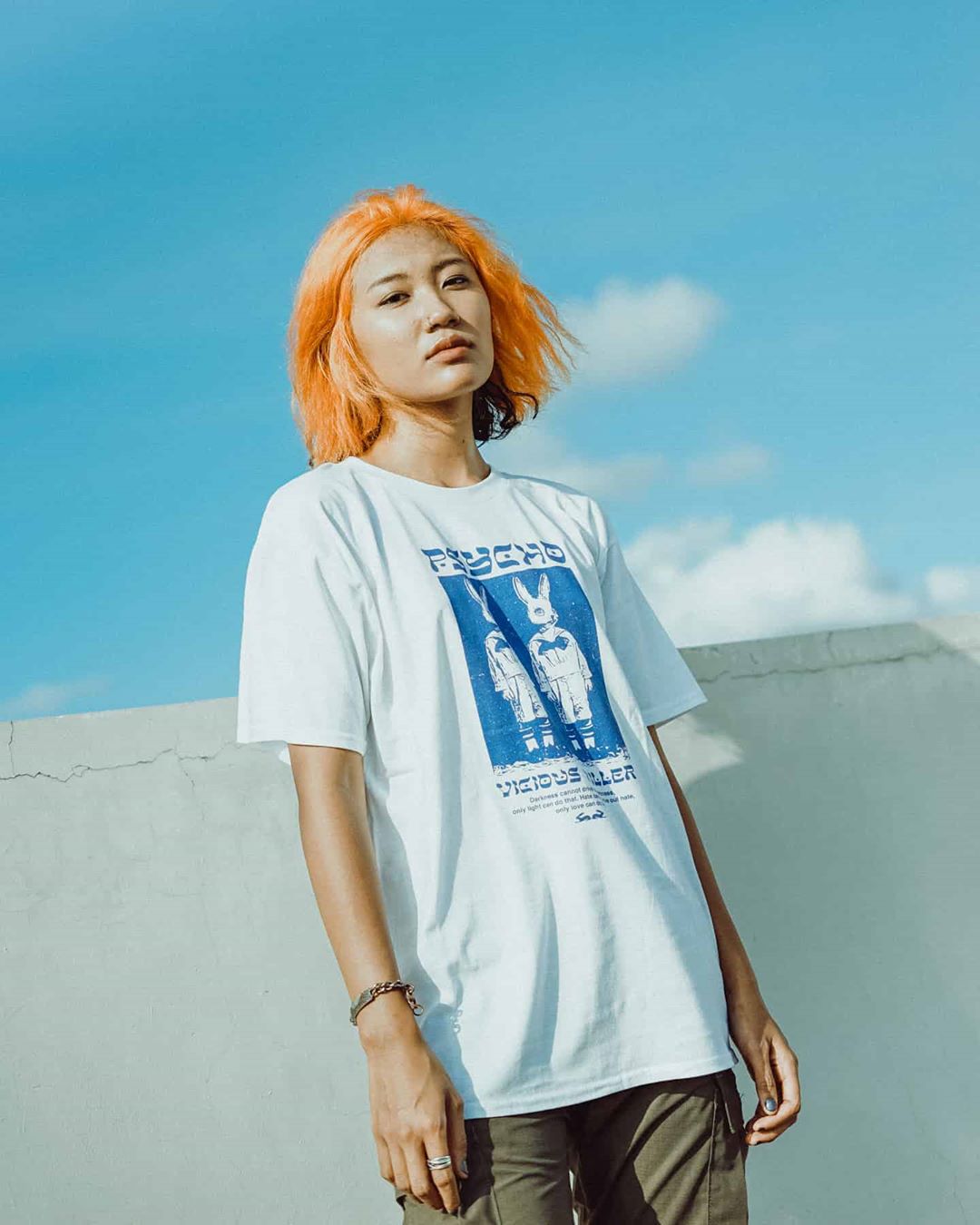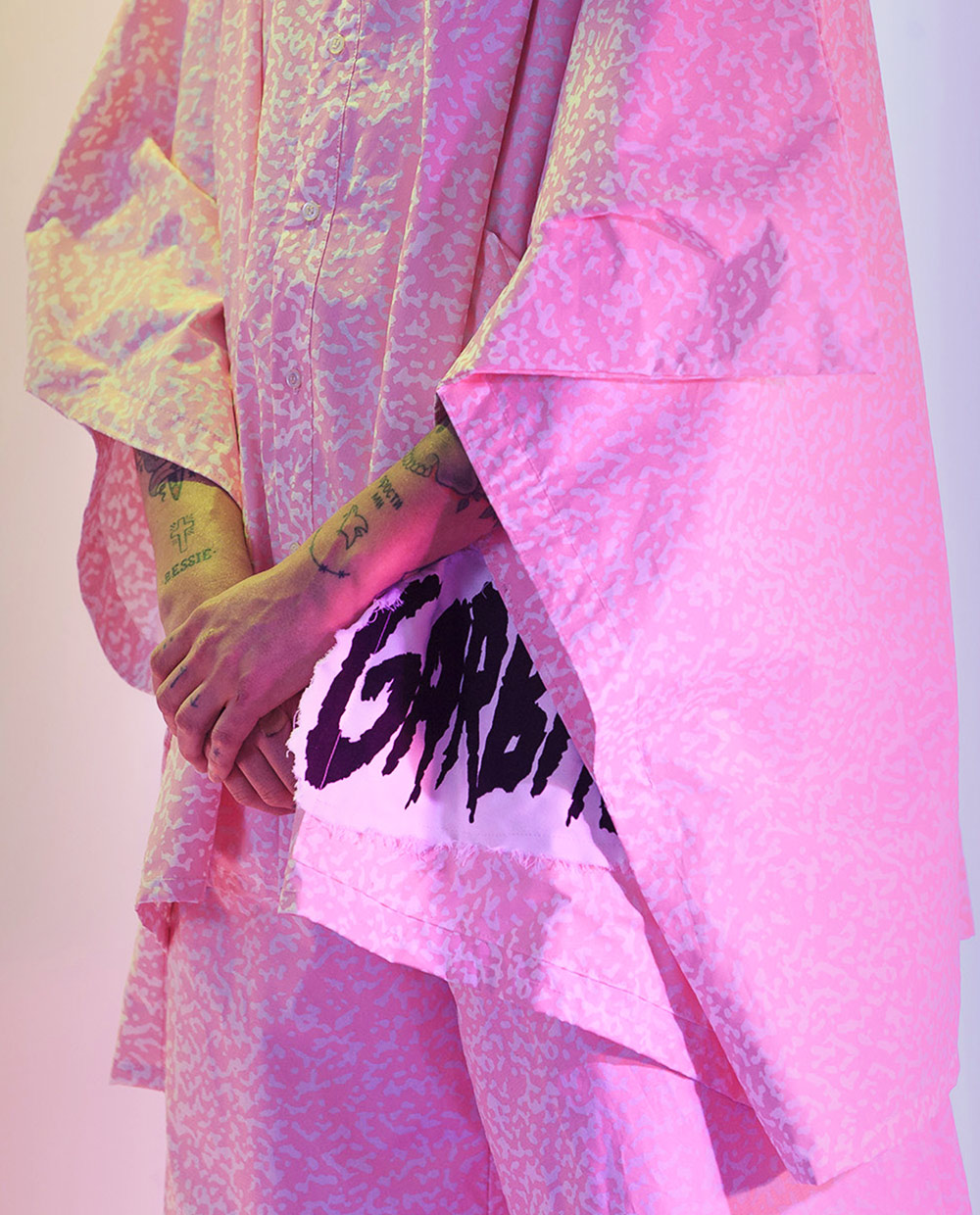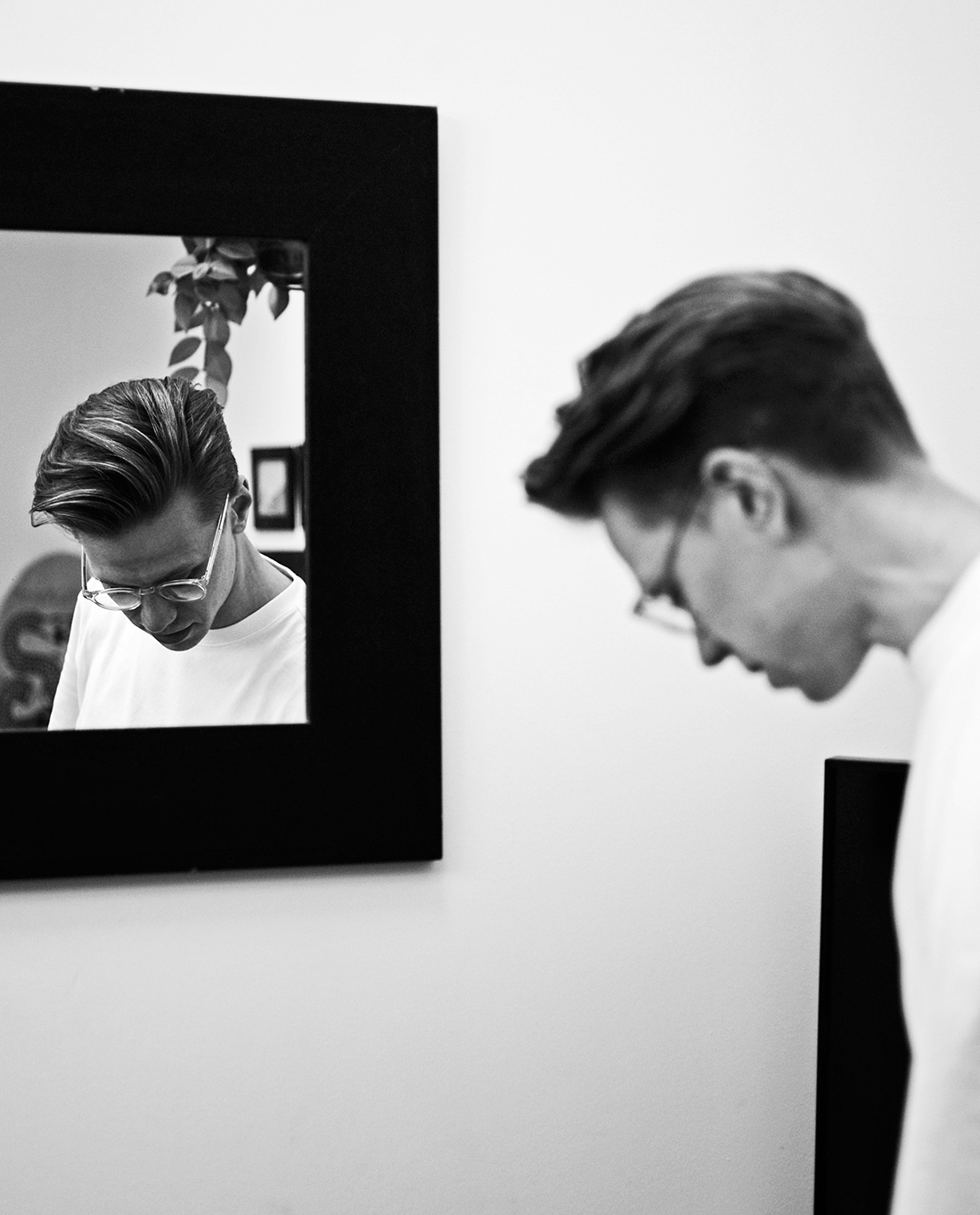Muhammad Fatchurofi
In 2012 fresh out of a graphic design degree, Muhammad Fatchurofi (@roovie) moved to Jakarta to work with a multidisciplinary artist there. Alongside this he balanced freelance illustration and graphic design jobs, as well as participating in residencies and group shows, so it’s not surprising that by 2016 he was suffering from burnout and exhaustion. Returning to his hometown of Semarang to regroup, he soon found that drawing was at the center of his practice again. “My drawing became more personal, rather than professional,” he said. “So I decided to use drawing as my form of release, and I began journaling my emotions and experience. My style became very different, and a lot simpler. Now, this is what I do.”
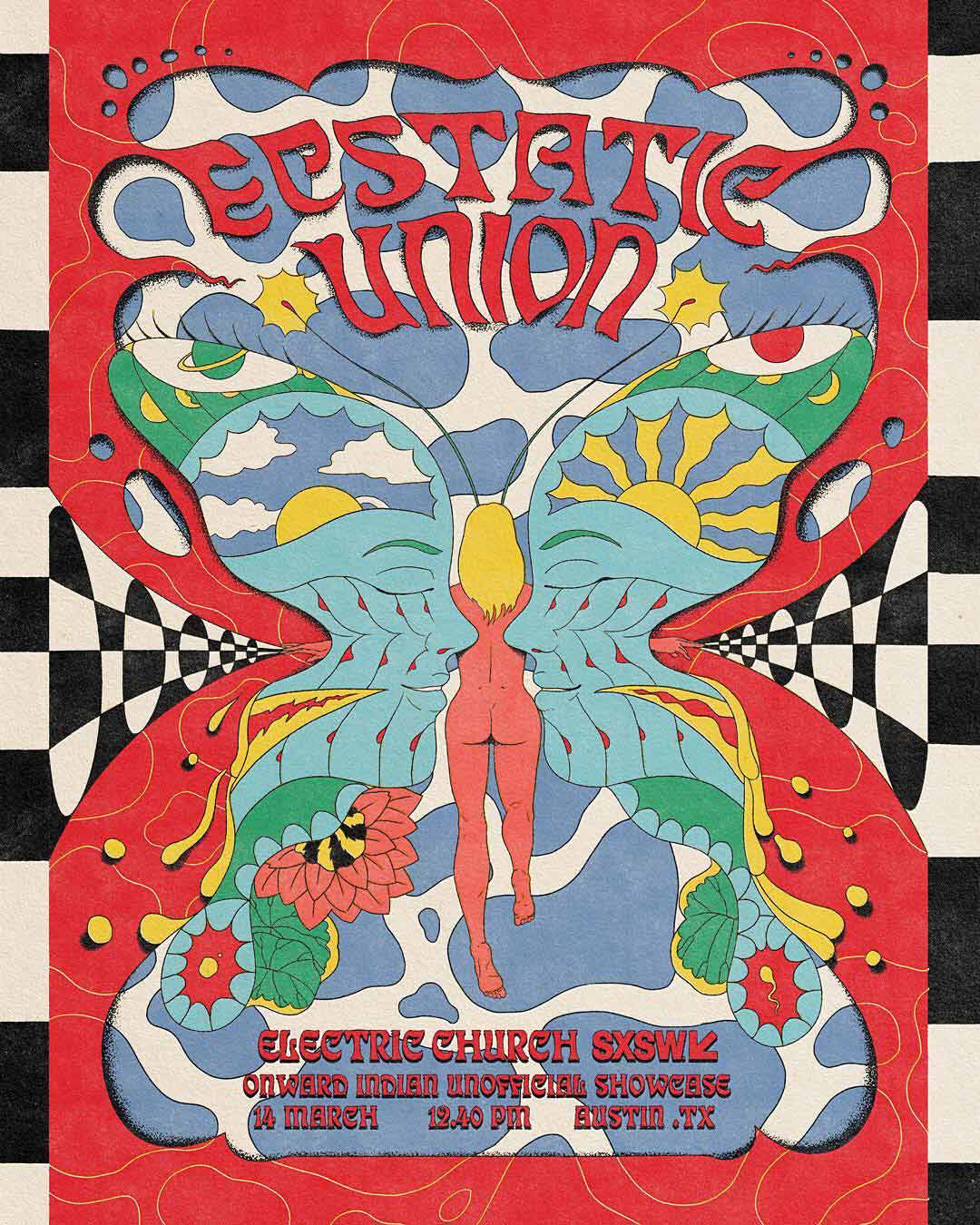
Are you from Indonesia?
Yes I am, I was born in Indonesia to Javanese parents.
How would you describe the creative scene in your city, and in Indonesia more generally?
Semarang is a minor player in Indonesia’s creative and art scenes, tending to have only sporadic and short-lived art collectives or projects. Finding a sustainable way to keep practicing art is a challenge that only a few can handle in this city.
More broadly, in Indonesia most creative activities are centered in Yogyakarta (or Jogja) and Jakarta, where the art scenes seem to get more interesting year on year. New galleries and museums are opening, not to mention events like ArtJog, Art Jakarta, Art Bali, Jogja Biennale, and the Jakarta Biennale. Recently, an Indonesian art collective was even appointed to curate the next Documenta.
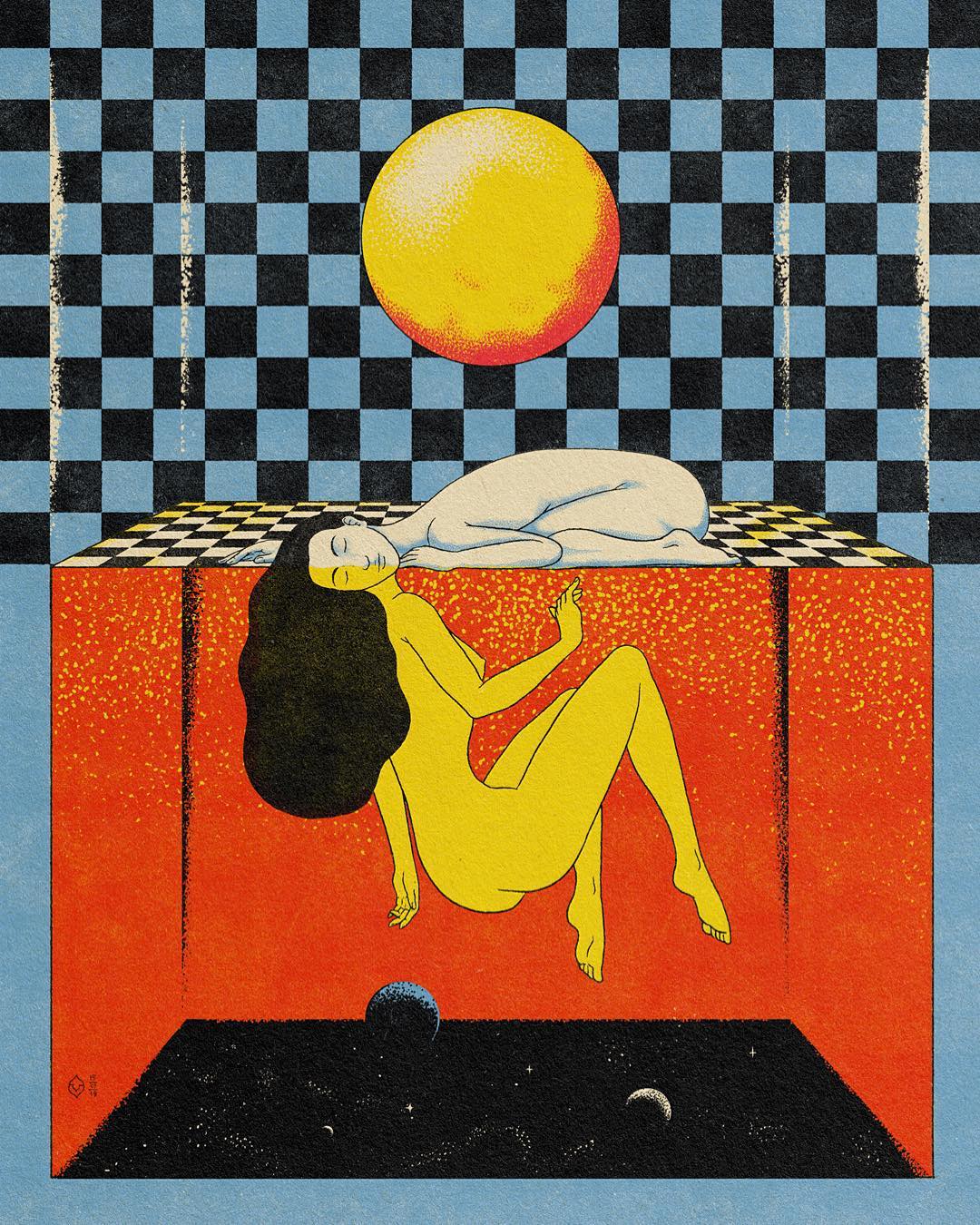
How do you think Indonesia has shaped your work?
I spend all my time in Indonesia, so it’s shaped the way I live and become the essence of my work. Most of my drawings are contemplations on my daily experience, and I think many of my insights can be traced back to the root of certain Javanese wisdoms (because I’m Javanese that is, Indonesia has hundreds of other ethnic groups with different traditions). My drawings are also often accompanied by Javanese text, or titled or captioned in “Basa Jawa.”
What’s the local creative community like?
Artists and creatives work in solo spaces and shared spaces alike. Typically they’ll meet at creative events, and they’ll often work together on bigger events like art markets or group shows. Everybody does more or less know each other, and though it’s a supportive community at the same time everyone is trying to come up with their ‘thing’.
It’s a supportive community but at the same time everyone is trying to come up with their ‘thing’
What are the challenges you face as a creative living and working in Indonesia?
The expansion of technology has done so much to change borders. Now it doesn’t matter where you are working, you can reach a global audience. One thing that is still an issue though, is that it’s quite hard (and not cost-effective) to make physical products available to ship worldwide for creatives that rely on themselves.
What would your biggest piece of advice be to other creatives living and working in Indonesia?
I don’t feel like I’m in a position to give decent advice yet, but from what I’ve learnt I think it’s important to try and focus on how I feel when I’m making art, because this will affect how people feel when they see my art. That’s the most important thing.
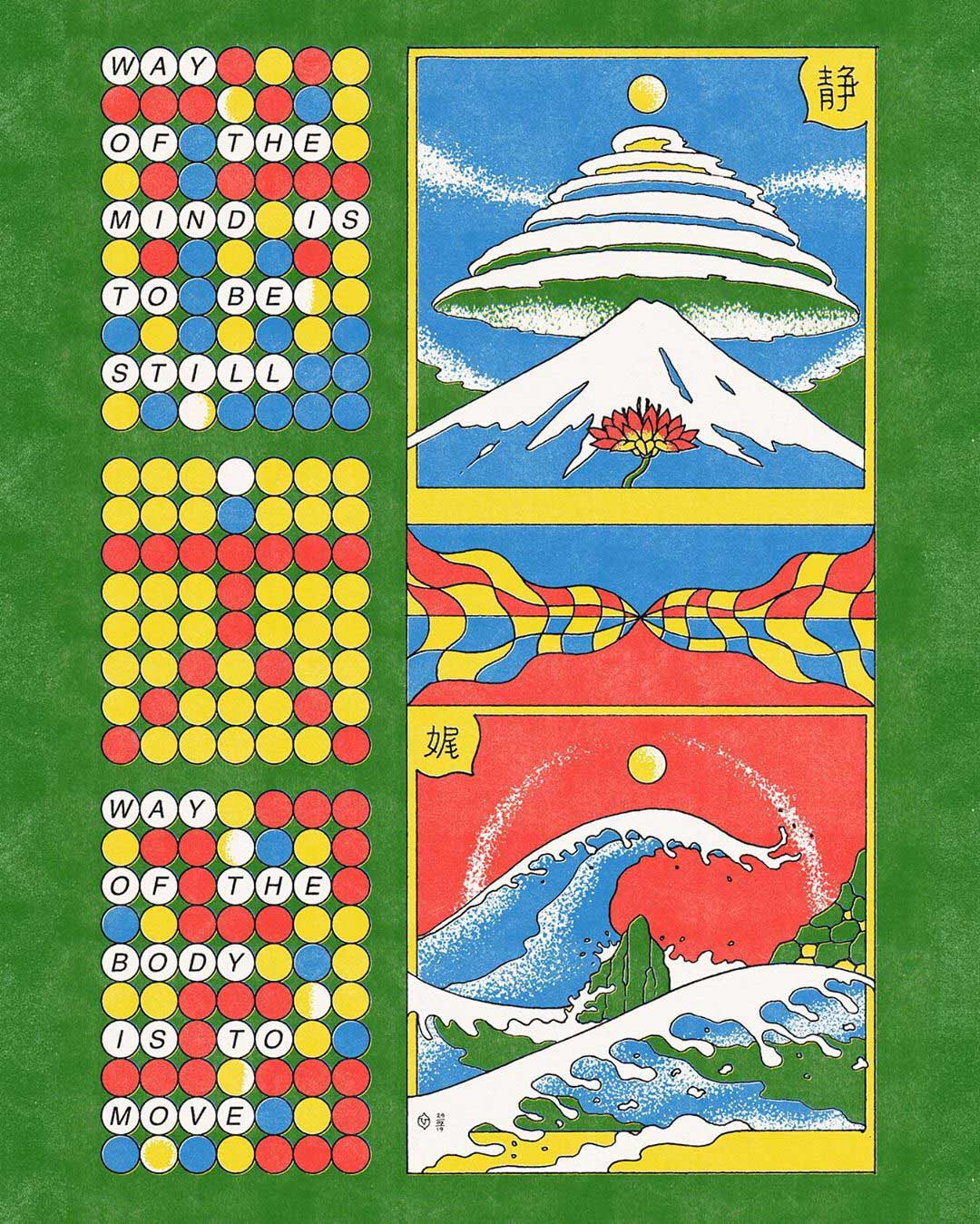
Who are your favourite local artists?
Papermoon Puppet, which is a hand-operated puppet show run by a couple. It’s a collaborative effort: the wife writes the stories and plays, and the husband designs the characters and does the artistic direction for the performance. Their show is magical, so alive despite the fact that it’s puppets, and the story is very heartwarming. I once got the chance to visit their home studio in Yogyakarta, along with some of my friends. It was amazing to see all the sketches of characters from their studio, so animated and full of emotions.
Lazar Ghul
27 year old illustrator and graphic designer Lazar Ghul cut his teeth on the Visual Communication Design course at the city’s Indonesian Institute of the Arts. Though he got his intro to Everpress just over half a year ago, “via a friend whose work was also showcased on the platform,” he’s gone on to run over 10 campaigns with us. Lazar is low key, he even designs under an alias, because in his words, “It’s more comfortable to work this way, without friends, family, and gossipers knowing what and how my design job is. From the outside, I’m just seen as an unemployed person who can support himself well.”
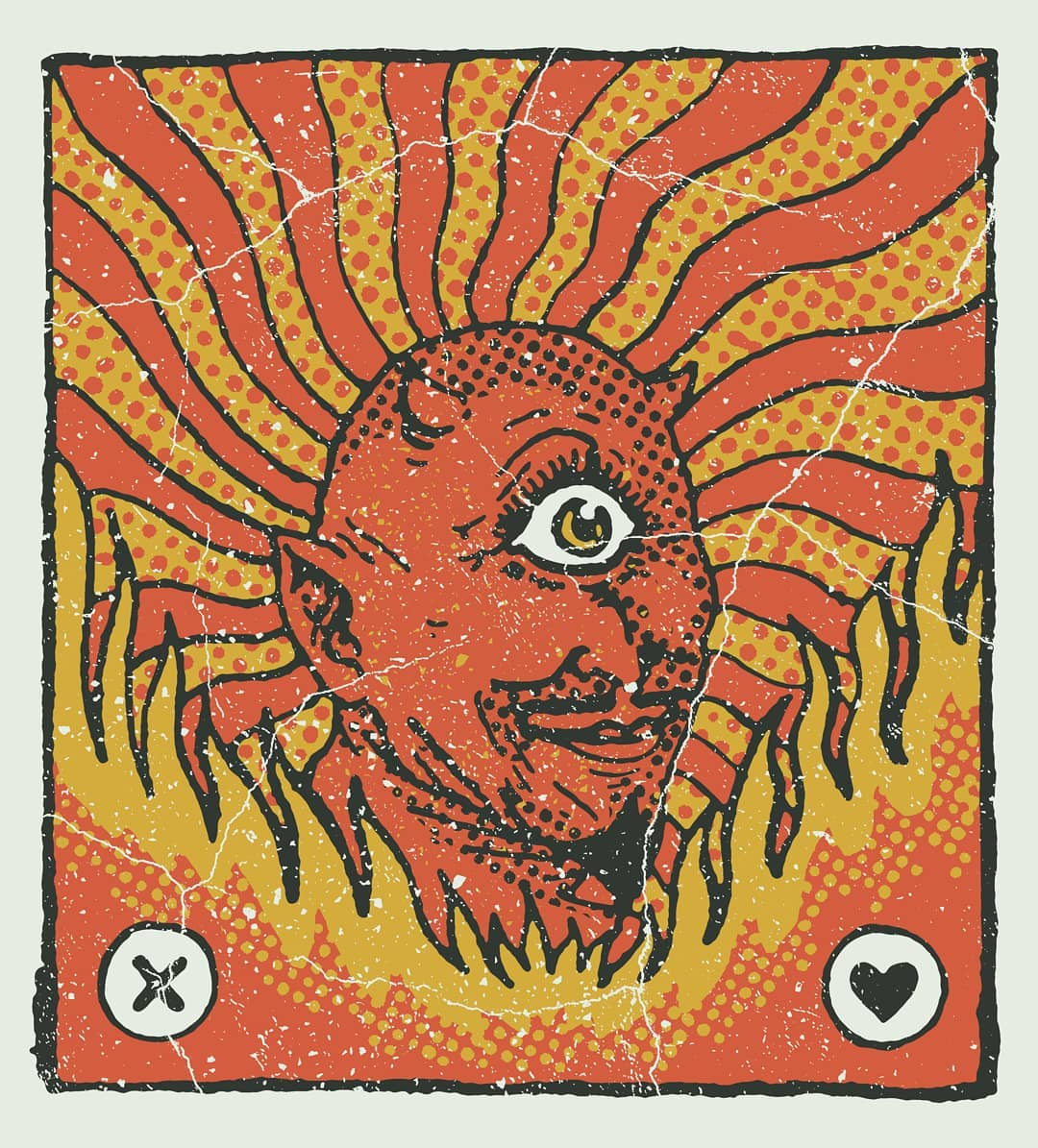
Are you from Indonesia? If not what brought you to the country?
I am originally from Indonesia, and I come from a Javanese (the largest ethnic group in Indonesia) family. I’ve now been living in Jogja by myself for 10 years.
How would you describe the creative scene in Jogja?
The creative scene here in Jogja is mainly centered around fine arts, not so much on commercial design. Music, theatre, literature, and graphic design are all heavily influenced by the fine arts scene.
Nationally, Jogja is still seen as the country’s quite touristy and traditional art city, where craftsmen preserve traditions and the Kraton palace is a focal point in the fairly conservative culture. Though this is half-true – for instance, we’re the only region in this country that is still lead by a king – Jogja has also produced a lot of the most radical Indonesian artists; from painters like Affandi to writers including Rendra and Joko Pinurbo.
How do you think Indonesia has shaped your work?
Something I try to address in some of my work, albeit in a lighthearted way, is the ongoing racism around me. Since-probably-the 1800s the Javanese population has clashed with the Chinese population, and now in Jogja there’s a rule preventing non-Indonesian citizens owning land. This directly affects both Chinese and Chinese-Javanese people, despite the fact that most of them have been born and raised in Jogja. This issue definitely influences my design. Even though I’m a Javanese I started to use Chinese characters in my work. At first this was because I liked how they looked, but then because I wanted to show how Chinese people are equally fun to hang around with. I use young, light-hearted content, like jokes on drug use (even though I don’t use drugs!)
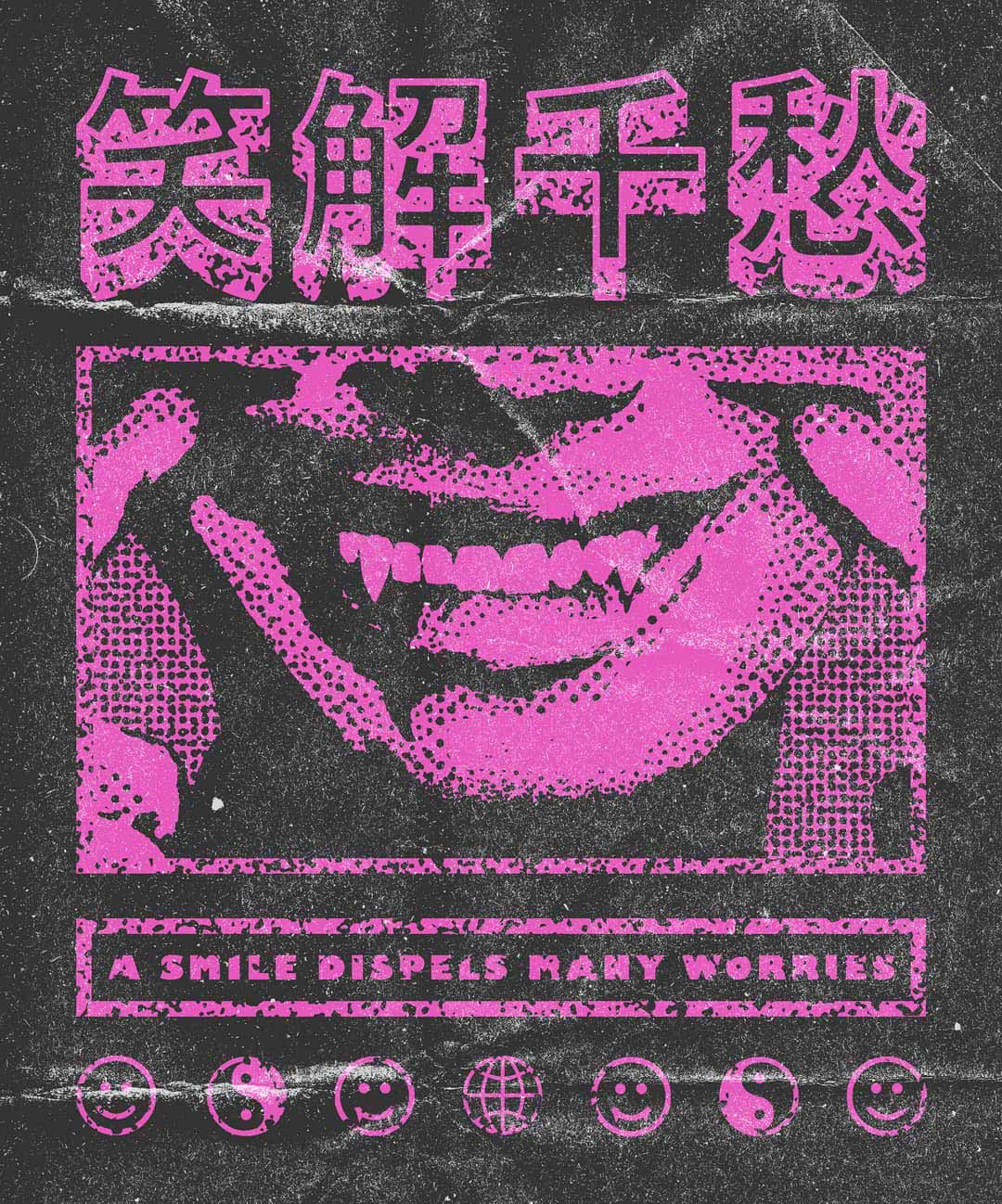
What are the challenges you face as a creative living and working in Indonesia?
The challenge of working in Indonesia is all about the currency; $1 is equivalent to 13,700 Indonesian Rupiahs. I think that already tells you everything you need to know about our economy.
What would your biggest piece of advice be to other creatives living and working in Indonesia?
I don’t feel like I’m ready to give advice yet – I still need advice myself!
Arindra Prakoso
Now 30, there’s no denying that in the period since he graduated in 2008 Arindra Prakoso has been busy. Starting out as a graphic designer, Arindra went on to build his own Digital Advertising Agency from scratch, while his most recent project has seen him setting up a clothing business too. The tees he puts out with us under his pseudonym Weyden are an eclectic mix, channeling everything from ‘90s rave flyer aesthetics, to fantasy and old-school cartoons.
Are you from Indonesia?
Yes, I’m Indonesian and currently live in Bandung City.

How would you describe the creative scene in Bandung, and in Indonesia more generally?
Indonesia is home to a lot of different cultures and unique styles that you can only find here, whether that’s architecture, fashion, illustration – you name it. I think this is a big source of inspiration for many young designers; to try and mix this local culture with modern, Western influences too.
How do you think Indonesia has shaped your work?
I’d say that, and this in general for Indonesian designers, not just for me, that it’s made me able to quickly adapt to new styles and design trends.
What’s the local creative community like?
We have many communities in each city with different arts backgrounds. Annually, they’ll have big events and exhibitions which gather local (mostly senior and famous) artists, ARTJOG is a good example of this. When it comes to younger artists, they’re more likely to join something like Urban Fashion Festival, or to work together on a small exhibition. People here like coming together in small groups and sharing in new design trends and references.

What are the challenges you face as a creative living and working in Indonesia?
The hardest challenge for me has been that Indonesian people tend to think of design as a simple thing, mostly they just see the result not the process. That’s been one of the biggest problems for me in terms of setting prices for my artwork.
What would your biggest piece of advice be to other creatives living and working in Indonesia?
To survive in this industry it’s really important that you never stop learning, no matter how long your career is or how much work you have done. Design trends will always be adapting and changing, and we must be able to follow that wave.
To survive in this industry it’s really important that you never stop learning
Who are your favourite local artists?
Darbotz and Abenk Alter.
Lutfi Ardiansyah
Living with Juvenile Rheumatoid Arthritis hasn’t slowed Lutfi Ardiansyah. Working out of a small studio in Malang, East Java, the freelance designer has recently launched his brand ‘Phènoméne,’ and he’s using Everpress as a global platform for it. Phènoméne takes its name from phenomenon, with designs inspired by film, street culture and nature too.

Are you from Indonesia?
Born and raised here!
How would you describe the creative scene in your city, and in Indonesia more generally?
Indonesia’s creative scene is continuously evolving, because there is so much to explore here. Every city in the country has its own different creative scene, and it’s been great to see more and more people become aware of the wealth of art coming out of Indonesia. From street art to traditional dancing and music, to modern art. I think the Indonesian creative scene is in pretty good shape.
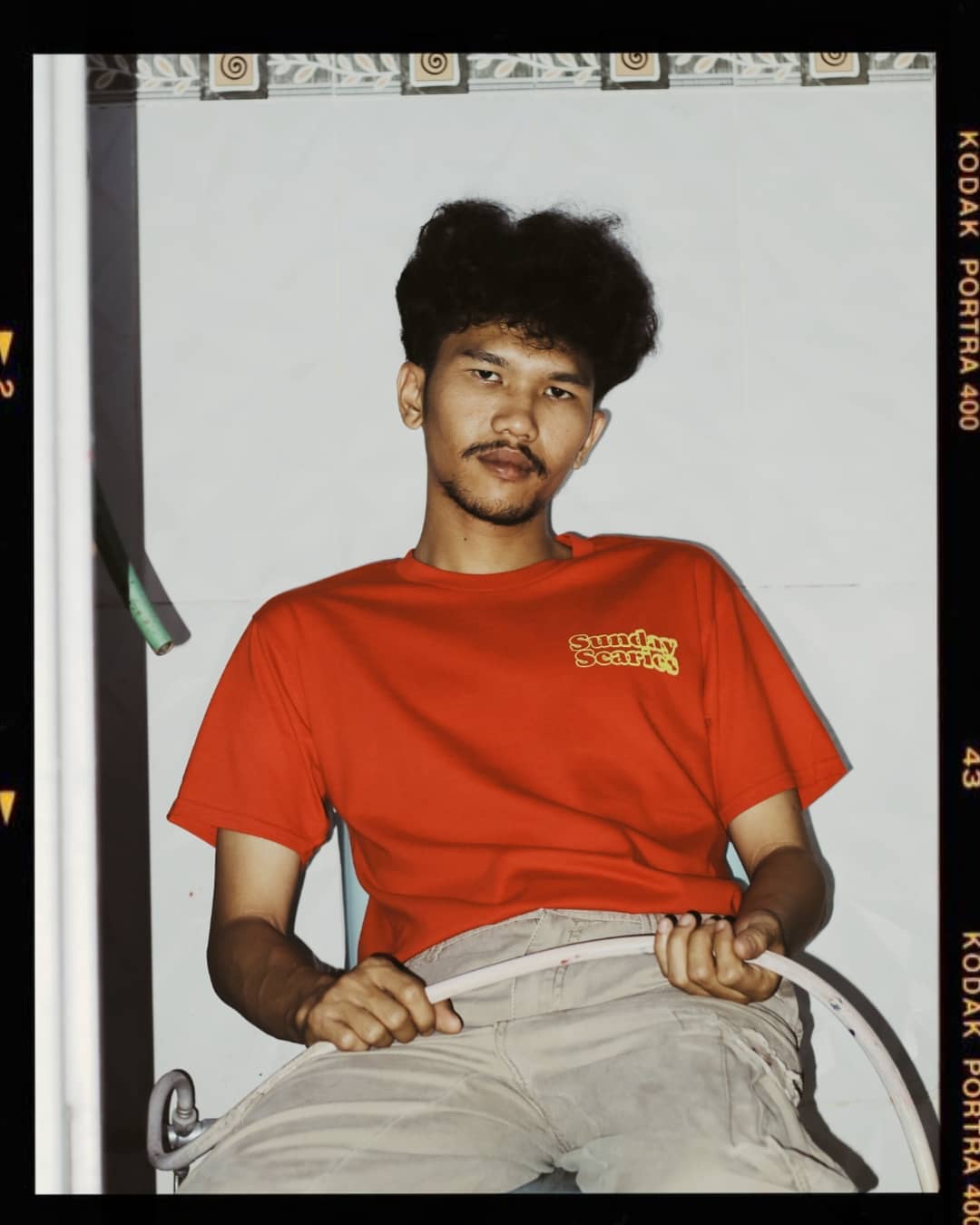
How do you think Indonesia has shaped your work?
I don’t think there’s one specific thing about Indonesia that I try to reflect in my work, but I do take inspiration from the streets, traditional culture, old Indonesian comics, and movie posters – to name a few! For instance, in my recent work ‘Spy Mask,’ I borrowed the mask element from Tari Topeng Malang, which is a traditional dance culture in my town. Or in ‘The Ocean’ I added some monster fish graphics that I found in an old Indonesian comic book.
What’s the local creative community like?
One of the best things about the local creative community is that it’s continuously evolving, we don’t all know each other but we support each other. It’s collaborative (but it can also be competitive!)
The local creative community is continuously evolving
What are the challenges you face as a creative living and working in Indonesia?
It’s great living in Indonesia, I don’t feel like I face too many challenges here. One thing, maybe, is that there are still many Indonesian people who don’t really value or appreciate art.

What would your biggest piece of advice be to other creatives living and working in Indonesia?
Just keep trying to make your best work, and don’t be afraid to try either. Try to show your work to the world, art is too important not to share – help bring the Indonesian creative scene to the world.
Who are your favourite local artists?
There are many artists who inspired me here, people like Ryan Ady Putra, the man behind Domestik, an old Indonesian comic artist called Tatang Suhenra, and plenty of others too.
Read More: Everpress Takeover: Barcelona



